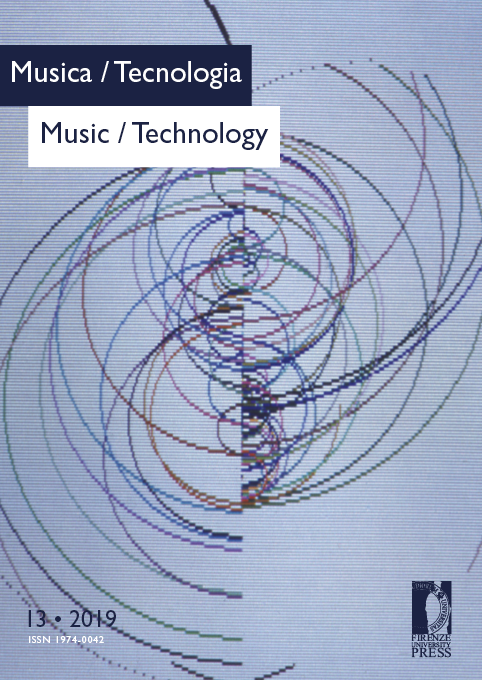Published 2013-08-05
How to Cite
Zavagna, P. (2013). La voce senz’anima: origine e storia del Vocoder. Musica/Tecnologia, 7, 27–63. https://doi.org/10.13128/Music_Tec-13206
Abstract
A review of the cultural origins of the speaking machines is proposed. These origins are identified in the separation between soul and body, proposed by Descartes. The speaking machines, and then the vocoder, are substantially formed by a controlled part and an automatic part; in the voder, the synthetic speaker is directly controlled by a human being, conversely in the vocoder an authomatic process is implemented. Through historical examples such as the ‘automata’ by Mical, Kratzenstein, von Kempelen, Wheatstone, Helmoltz, until the invention of the Dudley’s vocoder, are described a growth and a stratification of devices and synthesizers applied to varied fields (signal representation, encrypted transmission, medical apparatus, cybernetic, music). The historical period treated ideally ends with Dolson’s article written in 1986, “The Phase Vocoder: A Tutorial”. Through musical examples is described the origin of control data handling in composition. The musical application of the phase vocoder describes the distinction between control and synthesis better than other technologies. Both control (parameter values) and synthesis (instruments design) are compositional problems that involve all the electroacoustic music composers.Downloads
Download data is not yet available.


